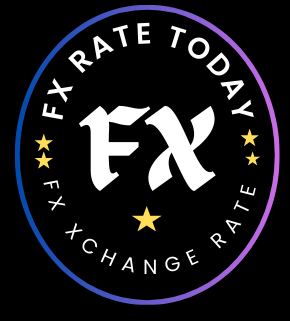Global Market Gross Overview: Trends, Growth & Key Insights (2025 Update)

Navigating the Global Market Gross: A Deep Dive into What’s Driving the World’s Economic Engine
The term “Global Market Gross” represents the colossal, interconnected engine of the world’s economy. It’s a broad measure reflecting the total value of goods, services, and financial assets worldwide. Understanding its drivers, fluctuations, and future trajectory is crucial for investors, business leaders, and policymakers alike. As we navigate through 2025, the global economic landscape is a complex tapestry of resilient growth, persistent challenges, and transformative trends.
What is Global Market Gross?
At its core, “Global Market Gross” can be understood as the combined gross domestic product (GDP) of all countries, also known as the gross world product (GWP). It represents the total monetary value of all finished goods and services produced globally within a specific time period. The World Bank and the International Monetary Fund (IMF) are key organizations that track and report on this data. Beyond just GDP, a comprehensive view of Global Market Gross also considers the total market capitalization of all publicly traded companies worldwide, which stood at a staggering $123.6 trillion in early 2025.
Key Drivers Influencing the Global Market Gross in 2025
A multitude of interconnected factors influence the health and direction of the global market. These can be broadly categorized into economic indicators, geopolitical events, and technological advancements.
Economic Factors:
-
GDP Growth: The rate of GDP growth is a primary indicator of economic health. Projections for global GDP growth in 2025 are cautiously optimistic, with estimates hovering around 2.5% to 3.0%. However, this growth is uneven, with a notable slowdown expected in China, while other emerging markets may show more resilience.
-
Inflation and Interest Rates: High inflation has been a persistent challenge, prompting central banks to maintain higher interest rates. This “higher-for-long” interest rate environment is a key theme for 2025, influencing everything from consumer spending to corporate investment. While inflation is expected to moderate, it is likely to remain above the targets set by major central banks for some time.
-
Employment and Consumer Spending: Strong labor markets in some regions have helped to mitigate the impact of high inflation on households’ real incomes. Consumer spending patterns remain a critical component of economic stability.
Geopolitical Landscape:
-
Trade Policies and Tariffs: The potential for escalating trade tensions and tariffs remains a significant risk to global market stability. Changes in trade policies, particularly from major economies like the United States, can have far-reaching consequences for supply chains and international commerce.
-
Political Stability and Conflicts: Geopolitical instability and regional conflicts continue to disrupt supply chains, impact commodity prices, and create uncertainty in the markets. These events can have a profound impact on investor sentiment and capital flows.
Technological Advancements:
-
Artificial Intelligence (AI): The widespread adoption of AI is seen as a major driver of productivity and economic growth. Companies across various sectors are leveraging AI to improve efficiency, leading to potential gross margin expansion. In the long run, AI is expected to contribute to higher GDP growth.
-
Digital Transformation: The ongoing digital transformation across industries continues to fuel growth. The electrical and electronics market, for instance, is benefiting from advancements in the Internet of Things (IoT), virtual reality, and 5G technology.
A Sector-by-Sector Snapshot of the Global Market
The global market is comprised of various sectors, each with its own unique dynamics and performance drivers. As of early 2025, the three largest sectors by market capitalization are Information Technology, Financials, and Industrials, which together account for half of the global stock market.
-
Information Technology: With a market capitalization of $25.7 trillion, the tech sector remains the largest globally.
-
Financials: The financial services market is projected to experience robust growth, driven by the rise of alternative investments and digital transformation.
-
Industrials: This sector is home to the largest number of publicly listed firms worldwide.
-
Healthcare: The medical equipment market is expected to be the fastest-growing segment in the coming years.
-
Energy: The transition to renewable energy and the development of green hydrogen are creating new opportunities in this sector.
-
Real Estate: While facing some headwinds, the real estate market is showing signs of a partial rebound, with global deal value increasing in 2024 for the first time in three years.
The Outlook for the Future
Navigating the global market in the coming years will require a careful balance of risk management and the identification of new opportunities. While challenges such as inflation and geopolitical tensions persist, the transformative power of technology and the resilience of certain sectors offer a basis for optimism.
Global growth is expected to remain modest but steady, though the paths of different economies are likely to diverge. Investors and businesses will need to pay close attention to policy changes, particularly in the areas of trade and regulation, to make informed decisions.
Conclusion
The “Global Market Gross” is a dynamic and ever-evolving entity. Its trajectory is shaped by a complex interplay of economic policies, geopolitical shifts, and technological innovation. While the current environment presents a mix of challenges and opportunities, a deep understanding of these influencing factors is essential for anyone looking to thrive in the global marketplace. As we move forward, the ability to adapt to change and embrace innovation will be key to unlocking growth and prosperity on a global scale.
Frequently Asked Questions (FAQs)
What is the difference between Global Market Gross and GDP?
Global Market Gross is a broad concept that encompasses the Gross World Product (GWP), which is the sum of all countries’ GDPs. It can also be viewed more expansively to include the total value of global financial markets.
What are the biggest risks to the global market in 2025?
The biggest risks include escalating trade tensions and tariffs, persistent inflation leading to prolonged high-interest rates, and geopolitical instability.
Which sectors are expected to perform well in the coming years?
The medical equipment, financial services, and electrical and electronics sectors are projected to see strong growth. The ongoing digital transformation and advancements in AI are also expected to create significant opportunities across various industries.
How does political stability affect the global market?
Political stability is a critical factor influencing the global market. Political instability and conflicts can disrupt supply chains, affect commodity prices, and create uncertainty, leading to market volatility.
